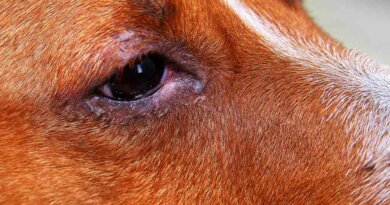The Takeaways From Seroprevalence Surveys
What your doctor is reading on Medscape.com:
MAY 04, 2020 — Medscape has asked top experts to weigh in on the most pressing scientific questions about COVID-19, starting with serology studies. We’ll have more COVID Data Dives from Dr. Dean and another expert later this week.
It’s easier to poke holes in a study than to run one yourself. We should expect many more SARS-CoV-2 serosurveys in our future. So, in the spirit of promoting good science, here are my thoughts on best practices for the design of serosurveys.
First, it is critical to remember that serosurveys are population-level surveys. They are intended to inform our broader understanding of the disease, not to tell individuals whether they have or have not been infected. The tests are still too unreliable for the latter.
Serosurveys are particularly useful in that they allow us to reconstruct the past. We expect that many mild infections are being missed because of insufficient testing capacity, and we are confident that the vast majority of asymptomatic infections are missed. By using antibody tests to look back at who has previously been infected, we can link this with known case counts to estimate the proportion of infections detected. Some experts say that 1 out of 10 or 1 out of 20 infections are detected, though some surveys have reported higher counts.
Given that we know that many infections are being missed, we might wonder what proportion of the total population has been infected. This can be used to address questions about “herd immunity.” Of note, though, we will need more evidence that having antibodies means you are immune, and that reinfection does not occur. So far, levels of antibody in populations studied have been low. We are seeing numbers only above single digits in hard-hit areas, indicating that we are far from the 60%-70% threshold for herd immunity.
We can use serosurveys to estimate the infection fatality ratio (IFR). Serosurveys let us estimate the full denominator of people infected rather than just PCR-confirmed cases. The crude case fatality ratio (CFR) is known to be an overestimate because testing is often reserved for the sickest patients. When we include mild or even asymptomatic infections, this number drops. Best estimates of IFR seem to be hovering around 0.5%-1.0%, although more data are emerging.
Continued
IFR is just an average, and we know that risk varies a lot across age groups. Another major scientific goal is to determine age-specific infection probabilities and, thus, age-specific IFR. This can be achieved if there is good survey coverage across age groups.
When thinking about designing a serosurvey to target a geographic region, it may make logistical sense to select a few smaller sub-areas to study. For example, we might select four to five areas ranging from most hard-hit (assessed by cases and deaths) to least hard-hit, to establish a range. Often we are most interested in capturing hard-hit areas because these will have the biggest numbers infected to support estimating overall and age-specific IFR.
The best survey designs are household-based with random selection of households. All persons in a selected household are invited to participate to get a broad range of ages. Including entire households also allows us to assess transmissibility within households. Household designs, while less prone to bias, are not immune as not everyone will consent to participate or be home. Essential workers, for example, may be harder to recruit than those who are sheltering in place. These studies also take more time to set up and run, and it is vital that survey teams are provided with adequate personal protective equipment when going to homes.
In a survey conducted in Miami, random digit dialing was used to recruit a representative sample of participants. Participants then agreed to visit a drive-thru testing site. Bias can still occur if people do not consent or do not have a car, but it’s a creative approach.
Volunteer surveys are a type of convenience sample. Santa Clara investigators used targeted Facebook ads to recruit participants to visit drive-thru test sites. Quotas were established per zip code to limit overrepresentation. The National Institutes of Health’s (NIH’s) survey in Bethesda, Maryland , is also volunteer-based. Questionnaire data are collected over the phone. Participants who are NIH employees are tested on site, and others are provided with a kit for home-based blood draw.
An obvious concern with volunteer surveys is that people will preferentially enroll because they think they had COVID-19 and want confirmation. Notably, the NIH lists prior COVID-19 or current symptoms as exclusion criteria. But World Health Organization (WHO) guidance advises against excluding known cases.
Continued
For volunteer surveys, consent bias is less of a concern if you can achieve high coverage. San Miguel County, Colorado , has processed 2500 tests for roughly 8000 residents.
Another convenience sample is blood donors, though you will still need to collect questionnaire data and people may be less likely to donate when they are ill. But WHO notes that blood donors are a very eager, easy-to-follow population.
So, quick-and-dirty or slow-and-rigorous? I think both have value. The rapid though potentially biased volunteer surveys establish an order of magnitude for seroprevalence (1%, 10%, 50%?) while we await the emergence of more reliable household data.
Studies also collect valuable questionnaire data in addition to basic demographic data. Occupation, travel history, known exposure to a case, and history of clinical symptoms in the months since transmission started are all important. We can use these data to identify risk factors for infection by comparing exposures of infected and noninfected individuals. For example, we may want to identify occupations at highest risk for infection or how frequently transmission within households is occurring.
Finally, surveys are often one-time, cross-sectional studies. But in Miami, 750 new participants are recruited each week (repeated cross-sectional studies). Longitudinal studies, where the same people are sampled every 3-plus weeks, are especially valuable, allowing us to examine antibody dynamics over time to look for waning.
These are some of the key design features for serosurveys. My opinions are informed by WHO guidance on seroepidemiology, discussions with colleagues, observation of what is out there so far, and personal experience with dengue serosurveys.
Natalie Dean, PhD, is an assistant professor of biostatistics at the University of Florida in Gainesville, She specializes in emerging infectious diseases and vaccine study design. Follow her on Twitter.





online pharmacy usa https://certifiedpharmacy.pro/
canadian prescription
I do trust all the ideas you’ve presented to your post.
They are very convincing and can certainly work. Still, the posts are
too short for beginners. Could you please lengthen them a bit from subsequent time?
Thanks for the post.
india pharmacy metformin online
Magnificent beat ! I would like to apprentice even as you amend your site, how
can i subscribe for a weblog web site? The account helped me
a acceptable deal. I had been a little bit familiar of this your broadcast provided brilliant
clear concept
If you are going for best contents like myself, simply visit
this site everyday for the reason that it provides feature contents, thanks
Hello there! Do you use Twitter? I’d like to follow you if that would be okay.
I’m absolutely enjoying your blog and look forward to new posts.
I have been exploring for a little for any high-quality
articles or weblog posts on this sort of space .
Exploring in Yahoo I eventually stumbled upon this web site.
Studying this info So i am happy to exhibit that I have an incredibly good uncanny feeling I discovered just what I needed.
I most surely will make certain to do not fail to remember this web
site and give it a glance regularly.
Awesome issues here. I am very glad to look your post. Thank
you so much and I’m taking a look ahead to
touch you. Will you please drop me a e-mail?
This info is worth everyone’s attention. When can I find out more?
I will immediately take hold of your rss feed as I can not find your e-mail subscription hyperlink or newsletter service.
Do you’ve any? Kindly let me recognise in order that I may just subscribe.
Thanks.
It is perfect time to make some plans for the long run and it is time to be happy.
I have learn this publish and if I may just I wish to counsel you few attention-grabbing things or suggestions.
Perhaps you can write subsequent articles relating to this article.
I wish to learn even more things approximately it!
Hi just wanted to give you a quick heads up and
let you know a few of the images aren’t
loading properly. I’m not sure why but I think its a linking issue.
I’ve tried it in two different web browsers and both show the same results.
Just want to say your article is as astounding.
The clearness for your put up is simply excellent and that
i can think you are knowledgeable in this subject.
Fine together with your permission allow me to grab your
RSS feed to stay up to date with approaching post.
Thank you one million and please carry on the gratifying work.
I appreciate, result in I discovered just what I was looking for.
You’ve ended my four day long hunt! God Bless you man. Have a great
day. Bye
I like the valuable information you supply on your articles.
I’ll bookmark your blog and check again here regularly.
I’m somewhat sure I will be informed many new stuff right here!
Best of luck for the next!
In reality, blackjack provides players a much better possibility to
score a win than any other casino game.
Every weekend i used to pay a quick visit this web site, because
i want enjoyment, as this this site conations really nice funny stuff too.
The cards and chips applied in blackjack have been identified in China,
Egypt, England, and other countries.
When it’s a package, you can get each a match supply and no cost
spins (e.g. $one hundred + 50 FS).